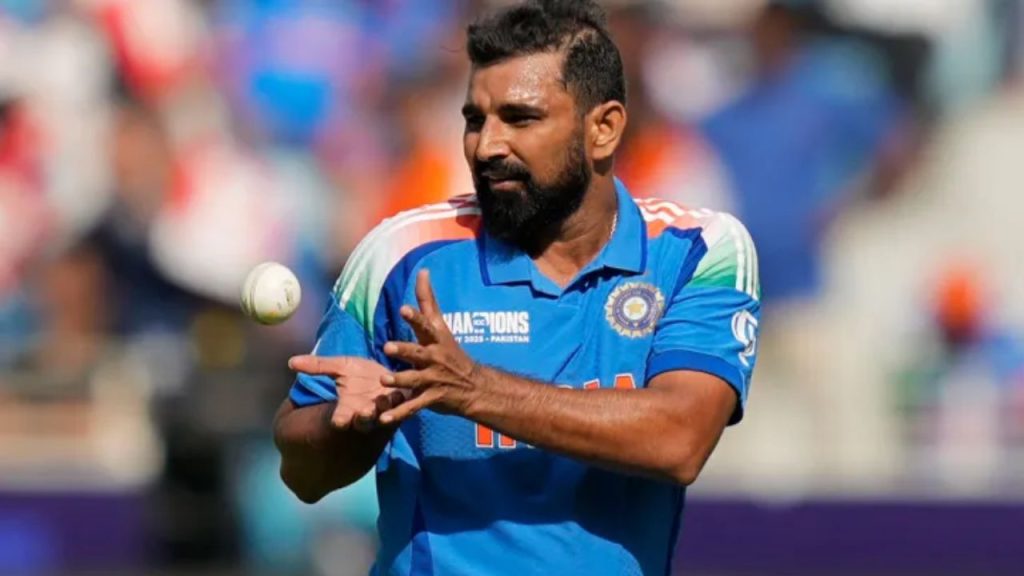Mohammed Shami, one of India’s premier fast bowlers, has been a cornerstone of the national team’s pace attack for over a decade. Known for his ability to swing the ball both ways, maintain relentless accuracy, and deliver in high-pressure situations, Shami has been a key figure in India’s cricketing success across formats. However, his recent exclusion from the Asia Cup 2025 squad raised eyebrows and sparked debates about his fitness, form, and future in international cricket. Shami, never one to shy away from addressing criticism head-on, responded with a pointed message to the selectors: “If I’m fit for the Duleep Trophy, how am I not fit to play T20s?” This statement, coupled with his return to competitive cricket in the Duleep Trophy 2025, has put the spotlight firmly back on the veteran pacer. This article delves into Shami’s performance in his comeback match, analyzing his contribution, physical condition, and what it means for his international prospects, particularly with upcoming challenges like the West Indies Test series and the 2027 ODI World Cup on the horizon.
Mohammed Shami’s Comeback in the Duleep Trophy 2025
Context of the Return
Shami’s exclusion from the Asia Cup 2025 squad came as a surprise to many, especially given his proven track record in white-ball cricket. His performances in the Indian Premier League (IPL) 2025 for Sunrisers Hyderabad (SRH) were underwhelming, with only six wickets at a high economy rate of 11.23, one of the highest for a bowler across seasons. This poor showing, coupled with recurring fitness concerns, likely influenced the selectors’ decision to overlook him for the T20 tournament. However, Shami’s participation in the Duleep Trophy, a premier domestic first-class competition in India, marked his first competitive outing since the IPL, offering a chance to silence his critics and prove his fitness and form.
The Duleep Trophy 2025 match between East Zone and North Zone, held in Bengaluru, was Shami’s platform to showcase his readiness. After nearly four months away from competitive cricket, the focus was on whether he could regain his rhythm and demonstrate the stamina required for longer formats. The absence of live telecast or streaming for the Duleep Trophy meant that fans and analysts had to rely on scorecards and reports to gauge his performance, but the numbers and context still provide valuable insights.
Performance Breakdown
On Day 1 of the East Zone vs. North Zone match, Shami bowled 17 overs, finishing with figures of 1/55. While these numbers may not scream dominance, they tell a story of resilience and workload management. Shami was the most-used bowler for East Zone after Jharkhand’s left-arm orthodox spinner Manishi, who bowled 19 overs. This heavy workload—accounting for 22% of the total overs bowled by his team—indicates that Shami was not only fit enough to handle a significant bowling spell but also trusted by his captain to lead the attack.
Shami’s solitary wicket came late in the day when he dismissed North Zone all-rounder Sahil Lotera, caught behind for 19. This breakthrough, while modest, was significant for a bowler returning after a long layoff. Breaking a partnership or dismissing a set batter is often a sign of a bowler finding their groove, and for Shami, this wicket could be a stepping stone toward regaining his match sharpness. The lack of detailed ball-by-ball commentary or video footage makes it challenging to assess the quality of his bowling—whether he was generating swing, hitting the right lengths, or troubling batters with pace. However, the fact that he bowled 17 overs without reported discomfort is a positive sign, especially given the selectors’ concerns about his fitness.
Fitness and Workload Concerns
Shami’s fitness has been a recurring topic of discussion in recent years. Since 2019, injuries have limited his appearances, with an ankle injury in 2023 sidelining him for an extended period. His rehabilitation at the National Cricket Academy (NCA) in Bengaluru was closely monitored, and Shami himself declared he was pain-free before the Duleep Trophy. His ability to bowl a substantial number of overs in a single day reinforces this claim and counters the narrative that he is unfit for competitive cricket. However, the selectors’ reluctance to include him in the Asia Cup squad suggests they may be prioritizing his long-term health, possibly with an eye on preserving him for Test cricket or the 2027 ODI World Cup.

